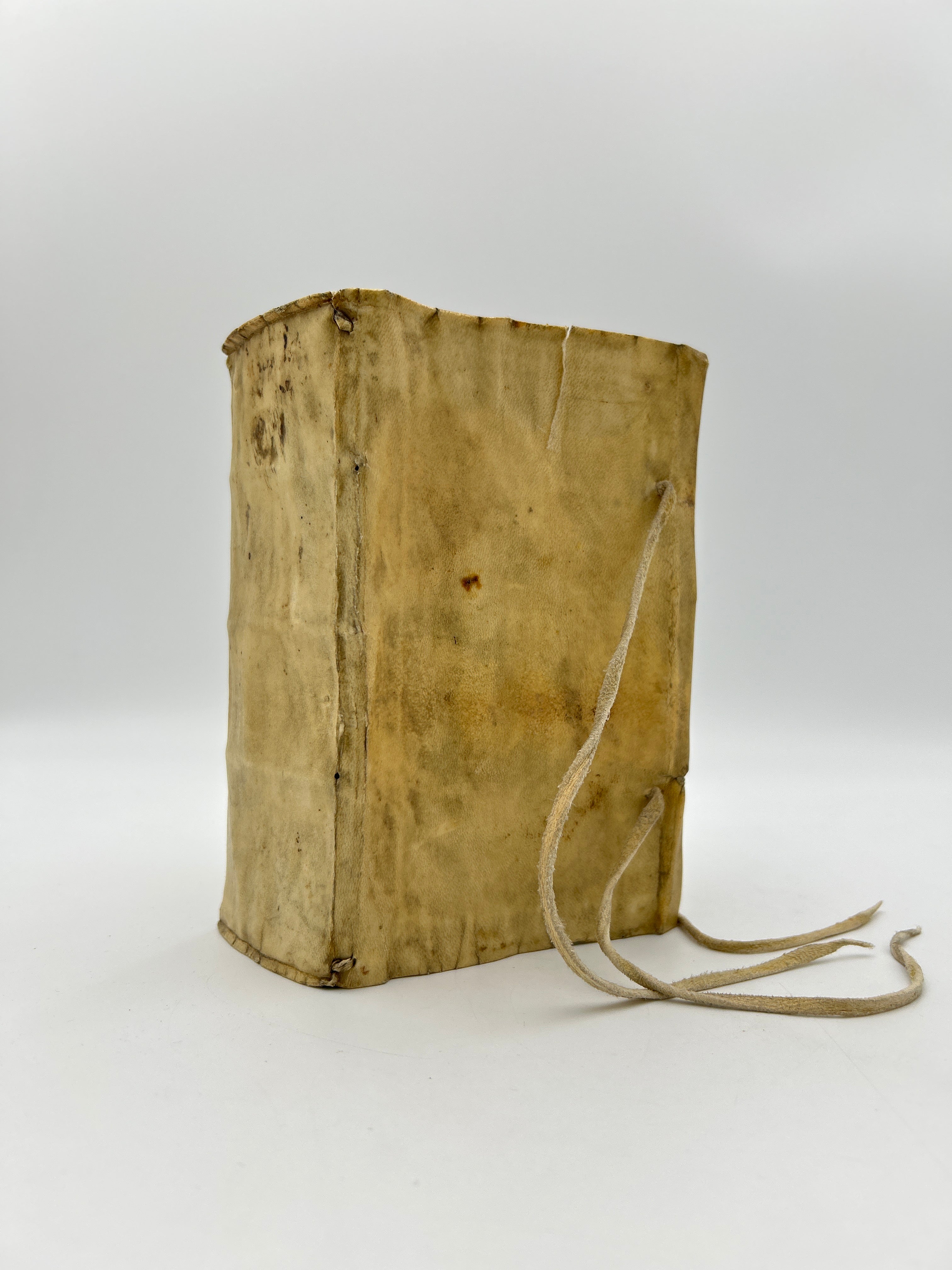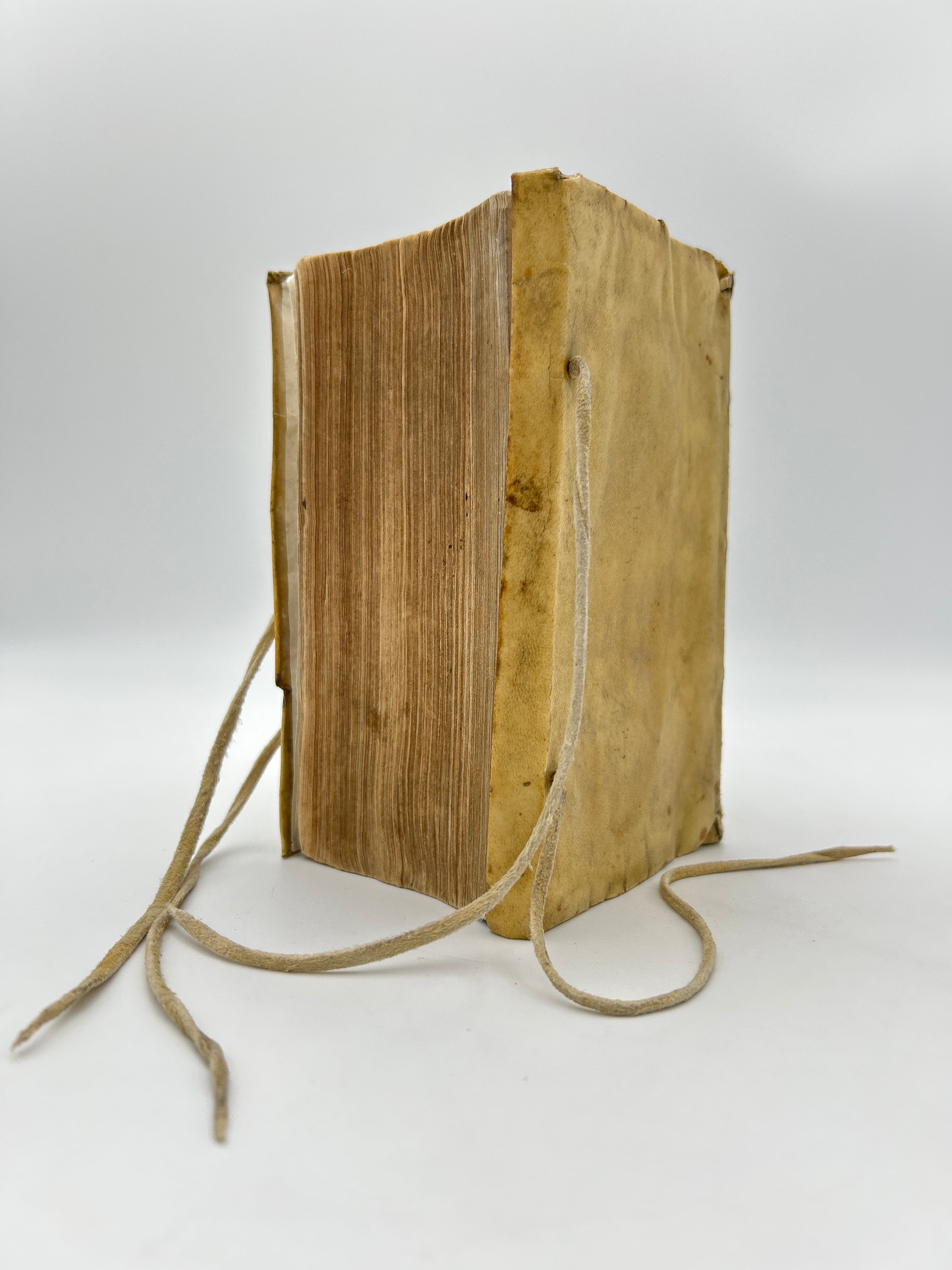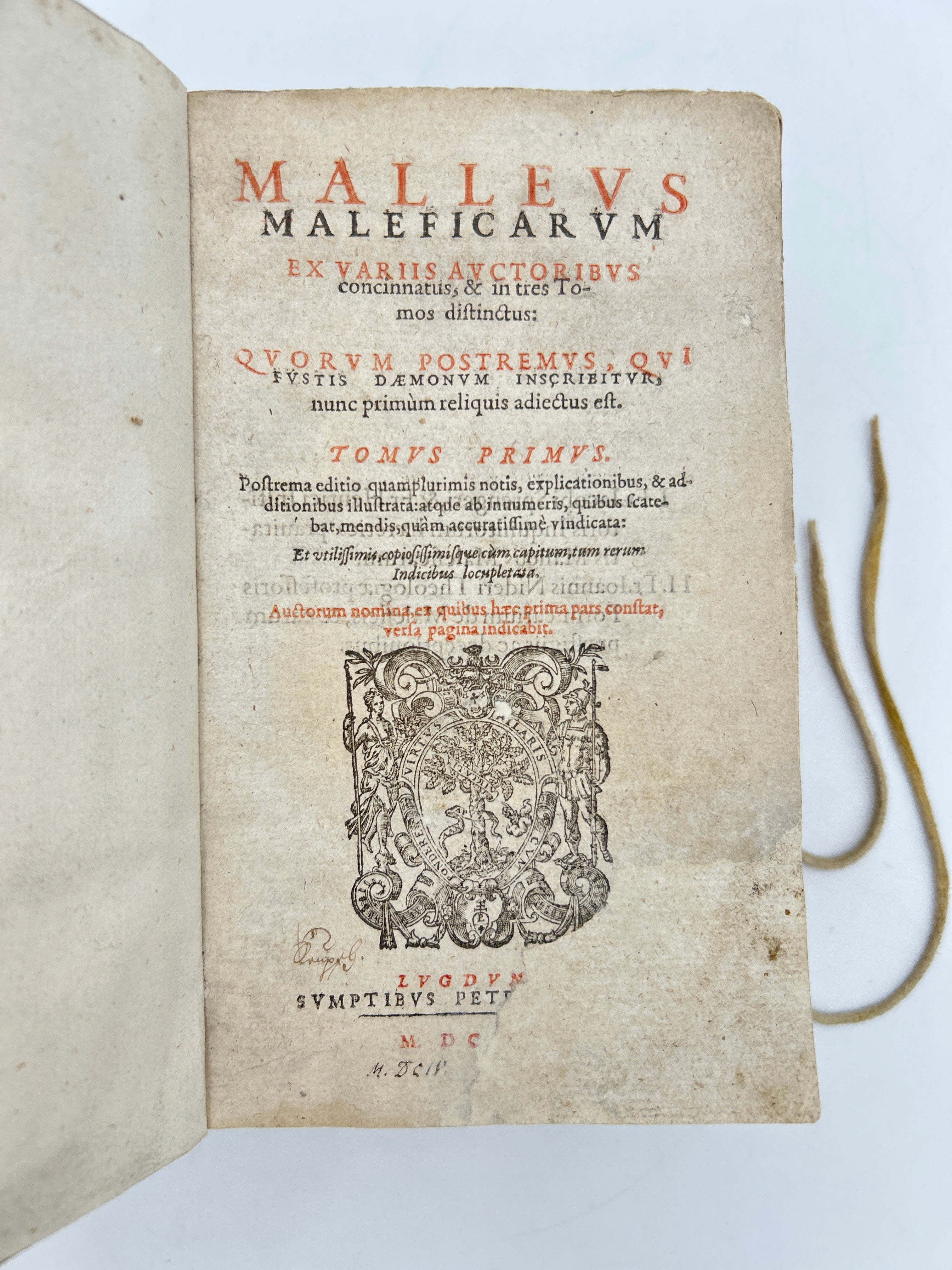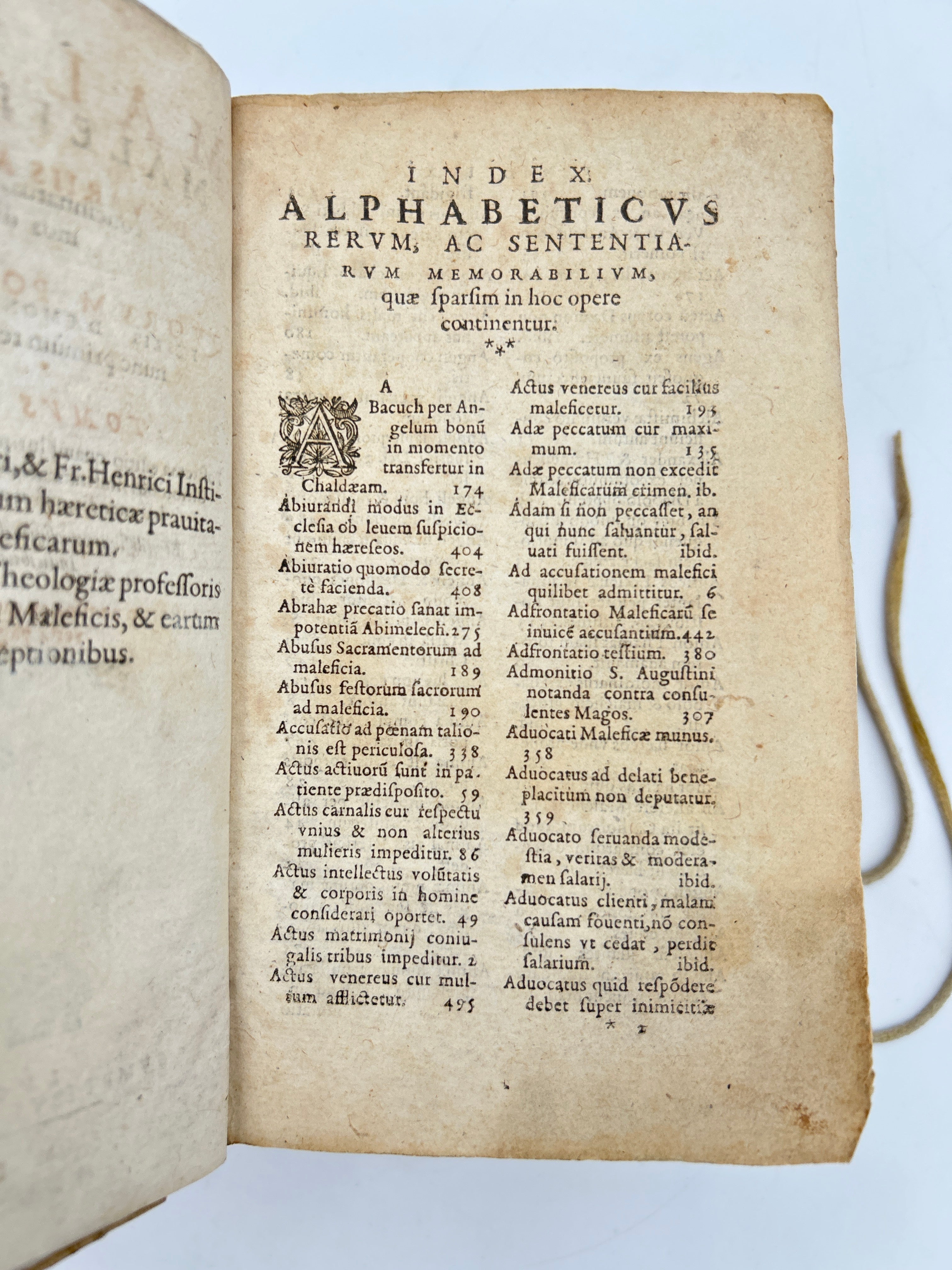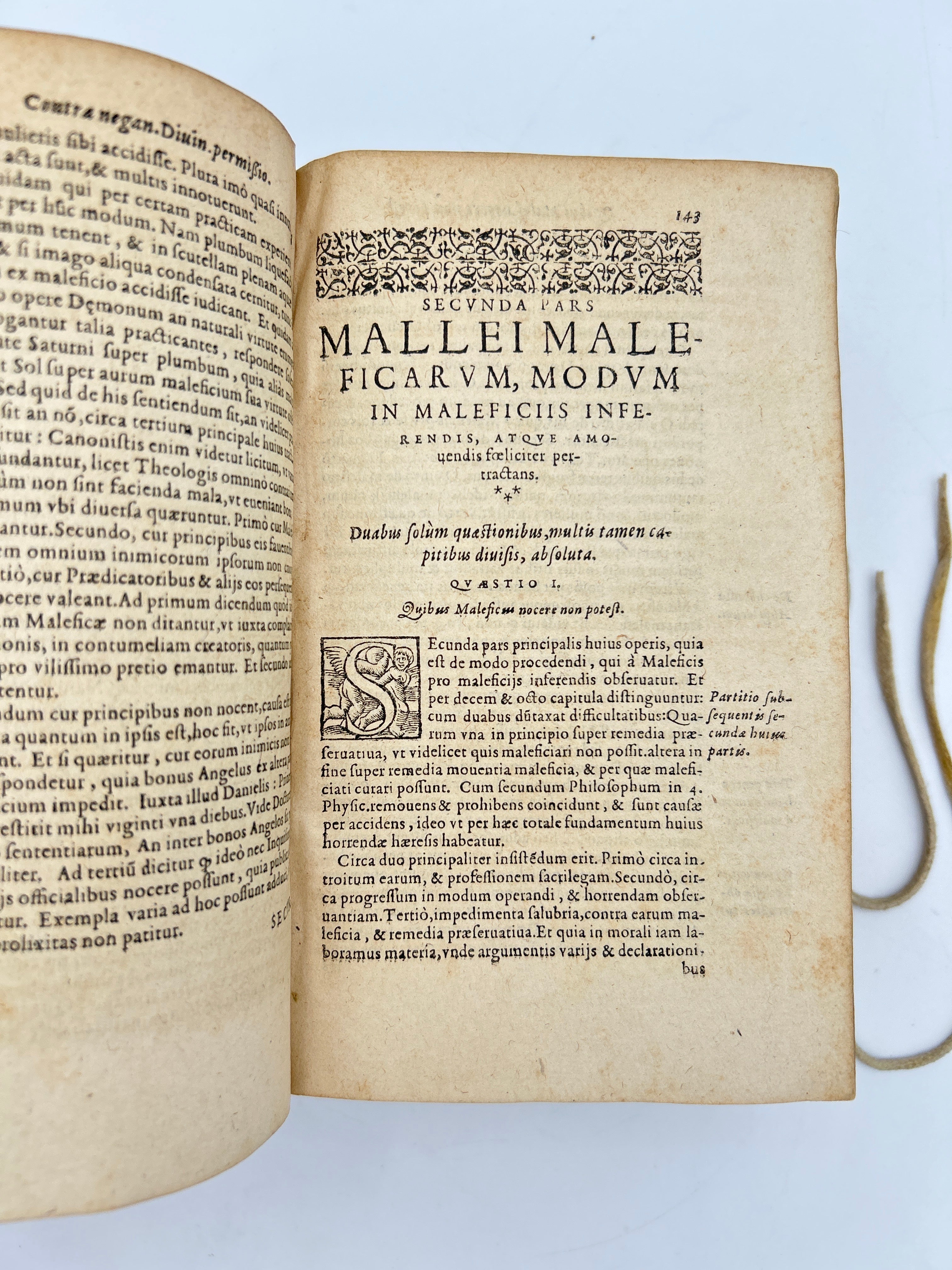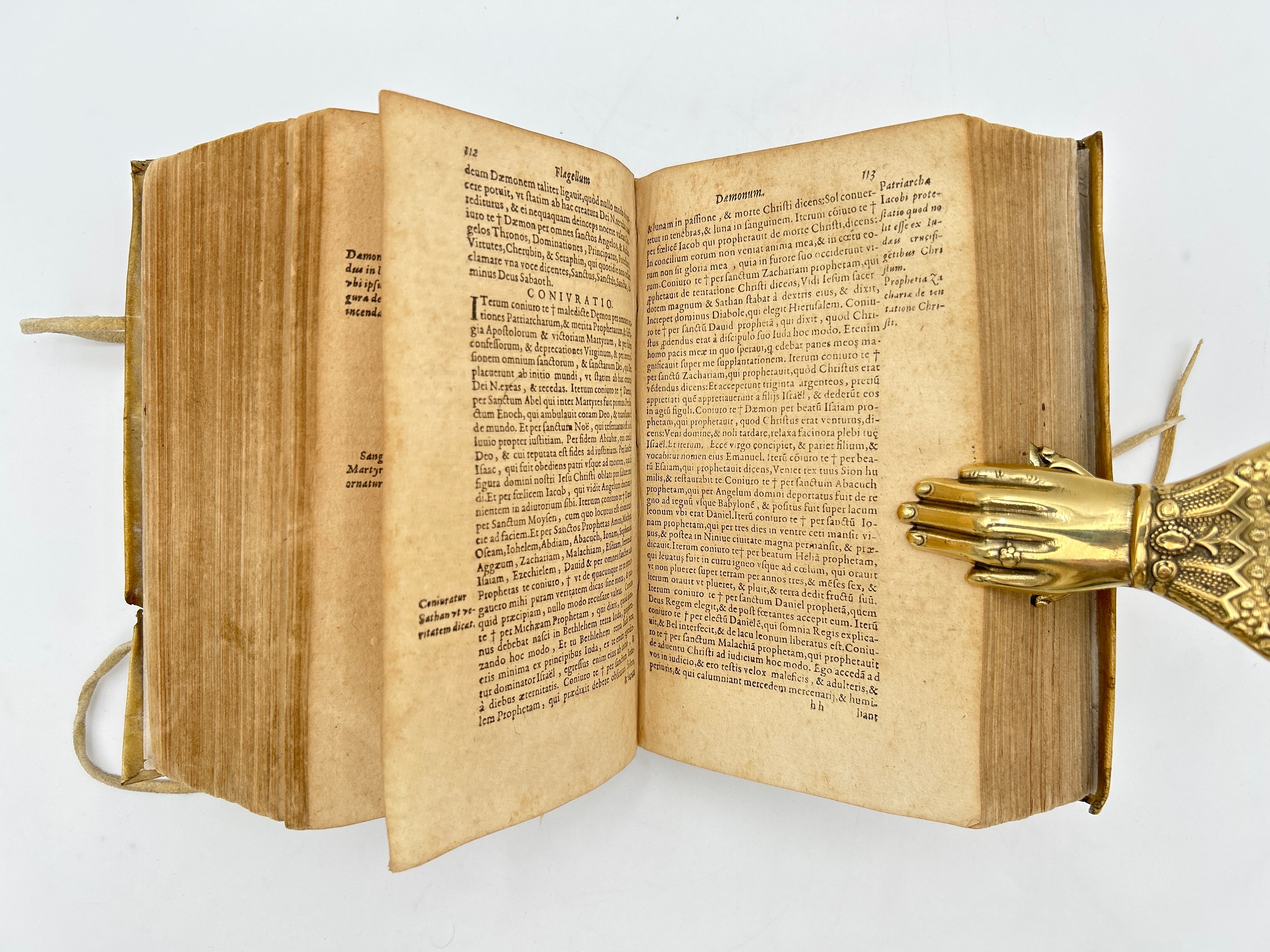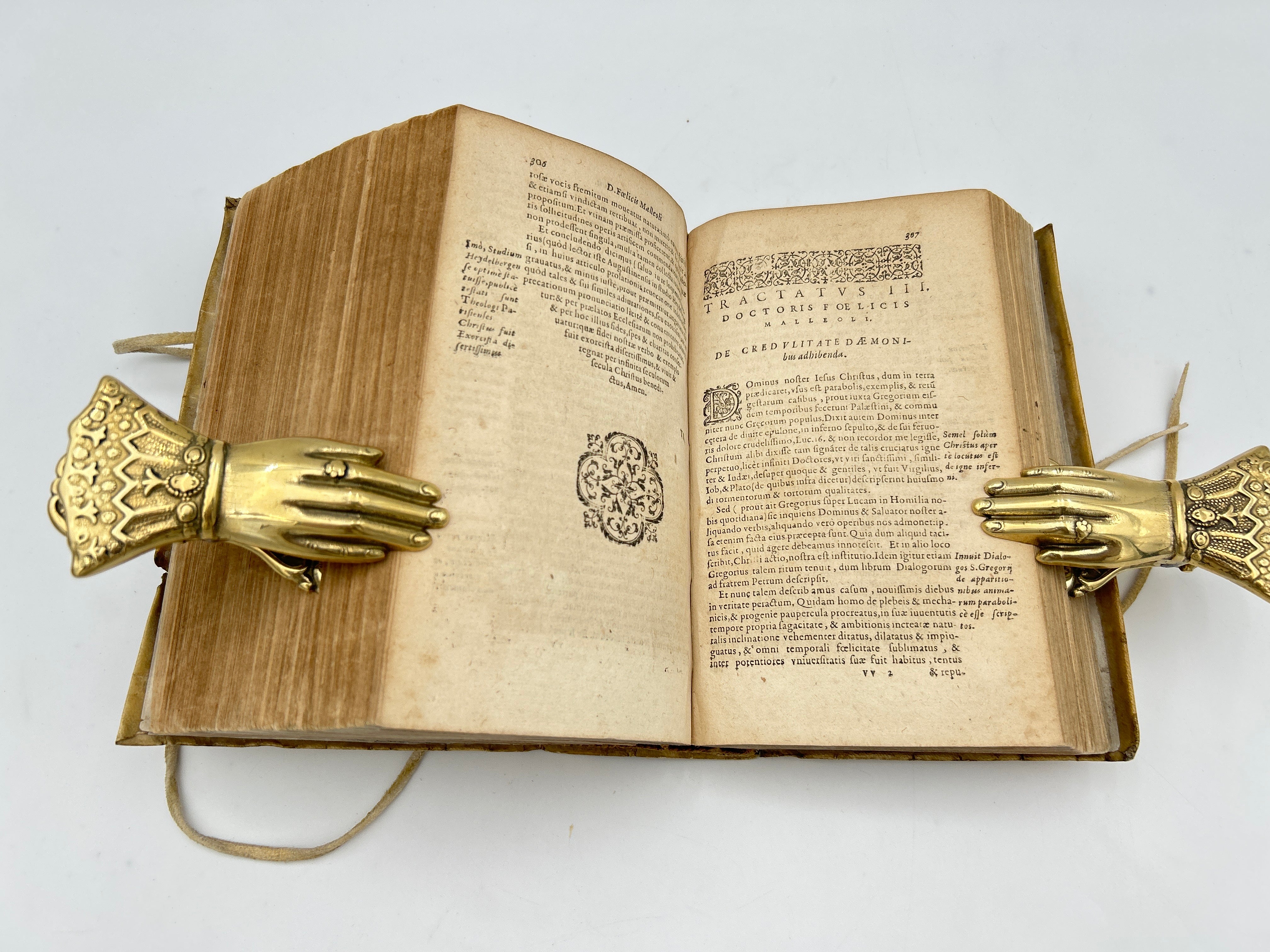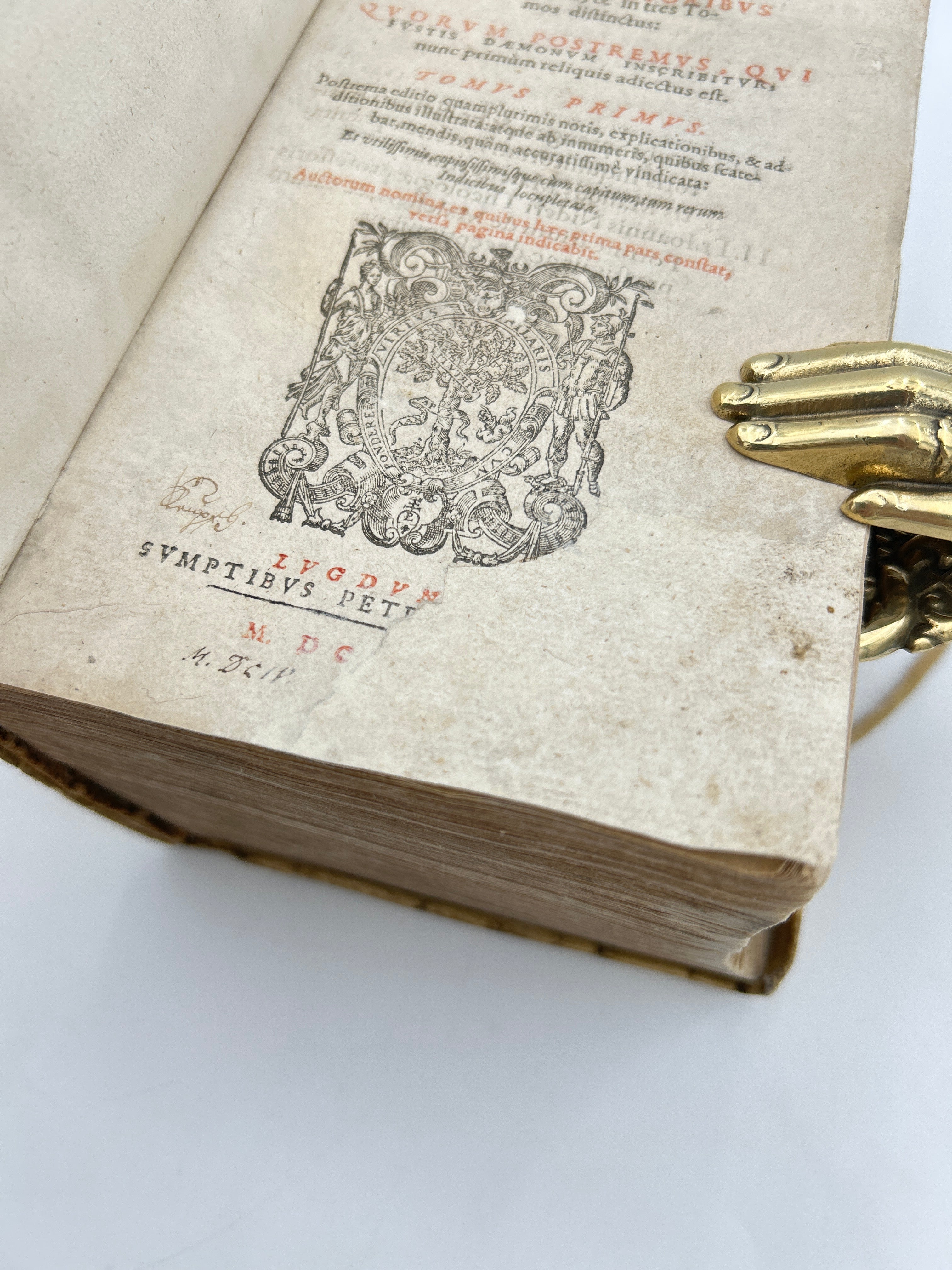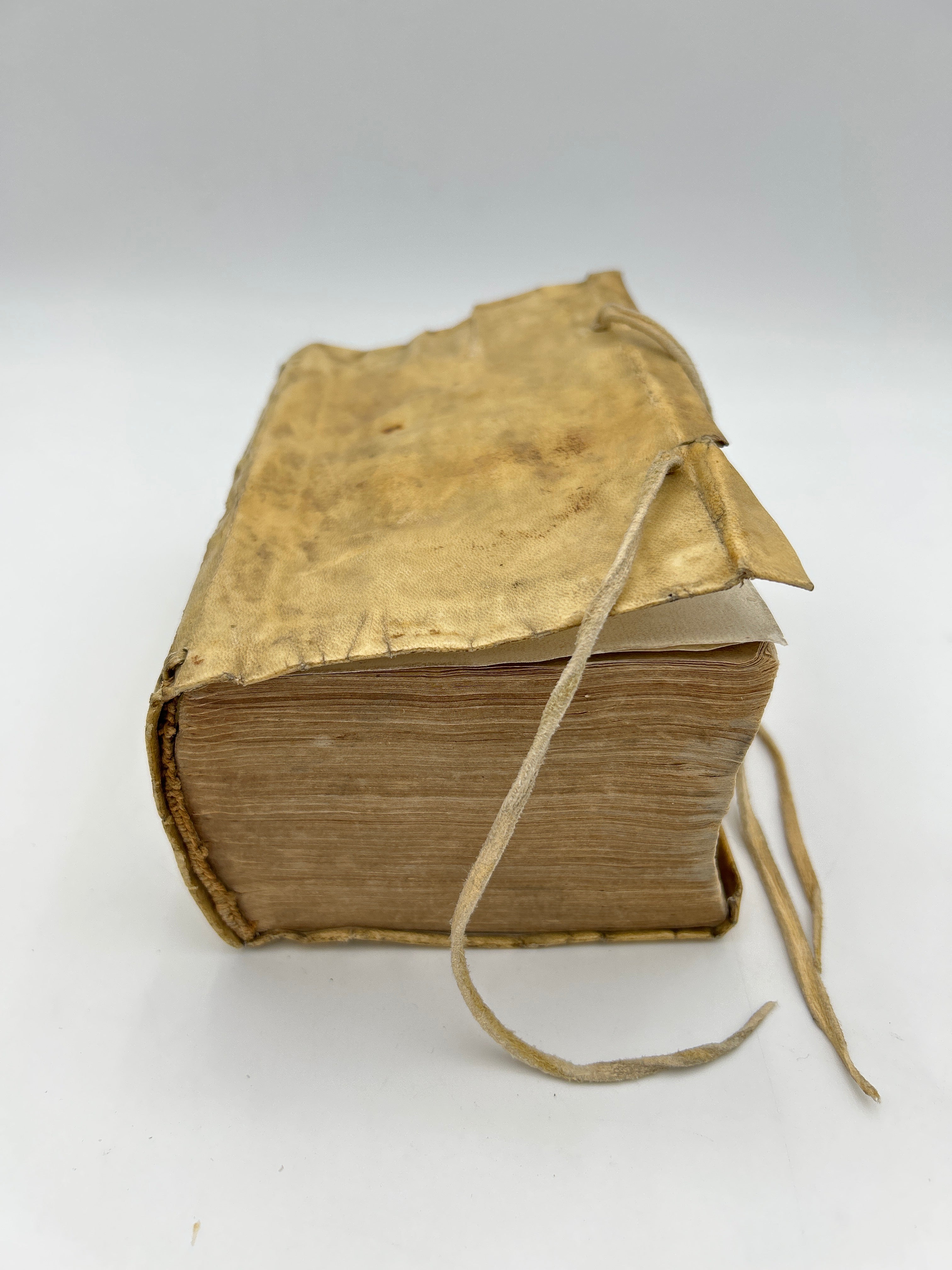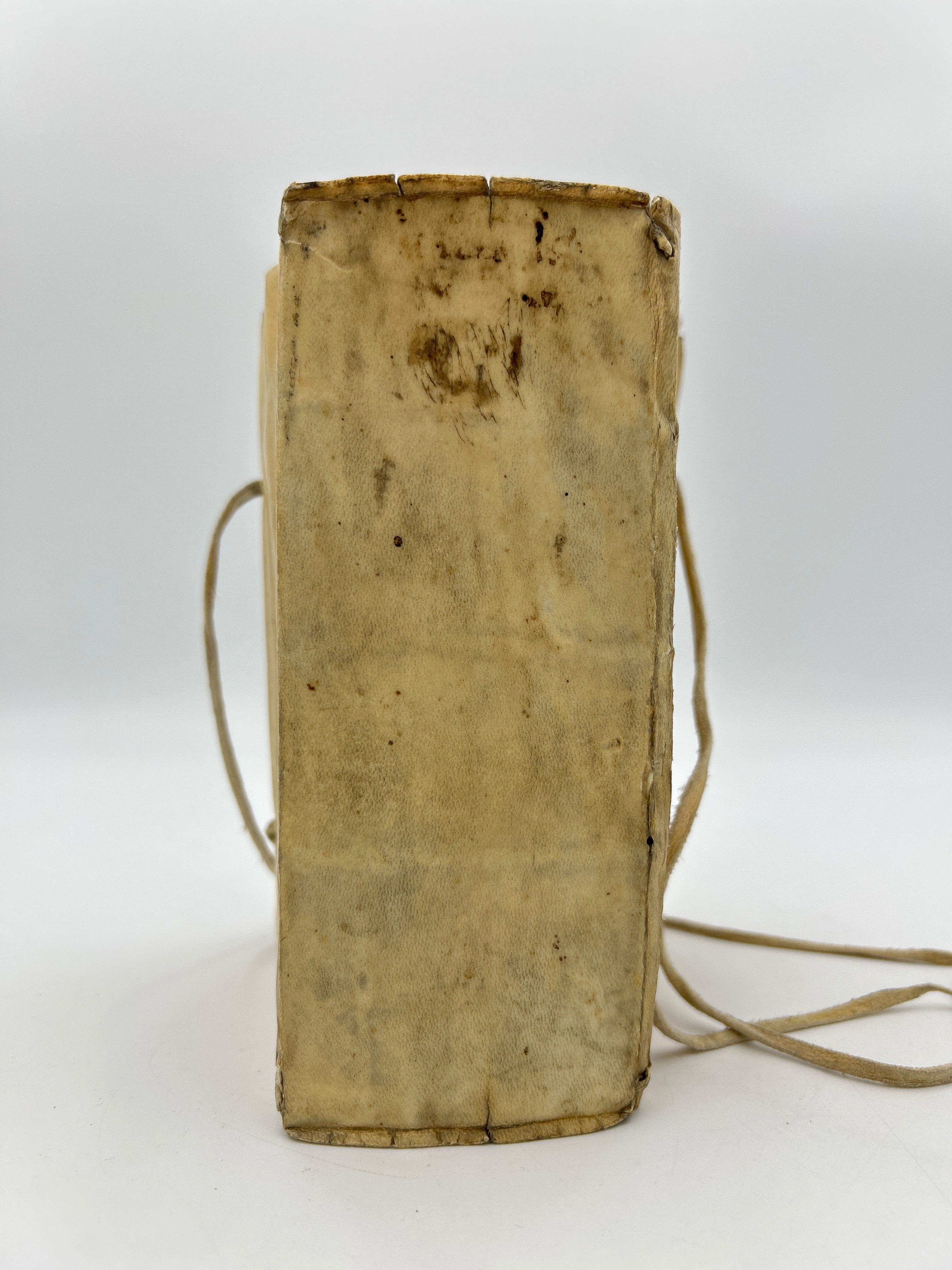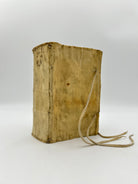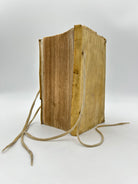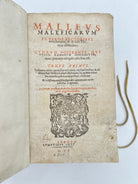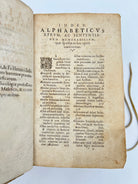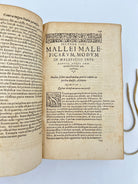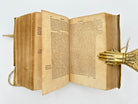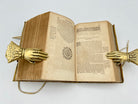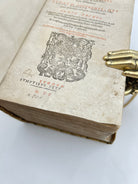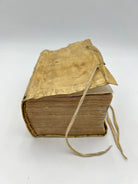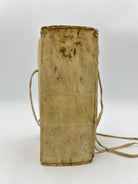The Malleus Maleficarum 1604
Couldn't load pickup availability
5RR Primarily by Heinrich Kramer. 1604
Notes
The Malleus Maleficarum (Latin for The Hammer of Witches), first published in 1487, is one of the most infamous treatises on witchcraft in history. Designed as a guide for identifying, prosecuting, and punishing witches, it systematically codifies the perceived nature of witchcraft as heretical and diabolical. The book is divided into three sections: the reality and characteristics of witches, their supposed powers and methods, and the legal procedures for trying and punishing them. Blending theological argument, legal instruction, and anecdotal evidence, it portrays witches as a grave threat to Christian society, while also reflecting deep-seated misogyny, warning particularly of the dangers posed by women. Its practical advice for inquisitors and judges made it a potent manual for the prosecution of alleged witches.
The treatise emerged during the late 15th century, a period marked by religious, social, and political upheaval across Europe. The Catholic Church was actively combating heresy, and the Inquisition was empowered to enforce orthodoxy. Widespread fears of the Devil’s influence, coupled with social tensions and anxieties about marginalized groups, created fertile ground for witchcraft hysteria. Printed in Mainz, Germany, shortly after the invention of the printing press, the Malleus Maleficarum was able to circulate widely, profoundly influencing the witch hunts that swept across Europe from the 15th to the 17th centuries. Its publication coincided with growing acceptance of judicial torture and confessions as legitimate proof of witchcraft, cementing its role in institutionalized persecution.
The book was primarily authored by Heinrich Kramer, a German Dominican inquisitor known for his zealous approach to rooting out witches. Kramer had previously faced opposition from local bishops for his extreme methods, and the Malleus Maleficarum reflects his fervent belief in the reality of witchcraft and the necessity of harsh punishment. Jacob Sprenger, another Dominican theologian, is also credited as a co-author, though historians debate the extent of his involvement. Sprenger’s association helped lend academic authority to the text, ensuring it carried weight within the Church and legal circles. Together, the authors created a work that not only codified contemporary fears of witchcraft but also shaped the course of European witch trials for centuries to come.
Description
Vellum binding. Tear to upper board. Four white leather ties. Fading inscription to spine. Wear to vellum binding causing ripples in the covers and spine. Several slight cuts into the extremities and discoloration to binding. Red and black lettering to title page and woodcut illustration. Repaired tear to title page obstructing text and date. Very good condition all things considered.
